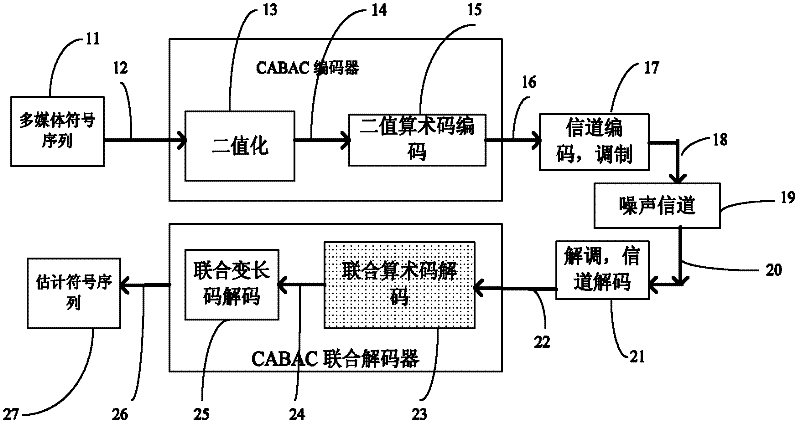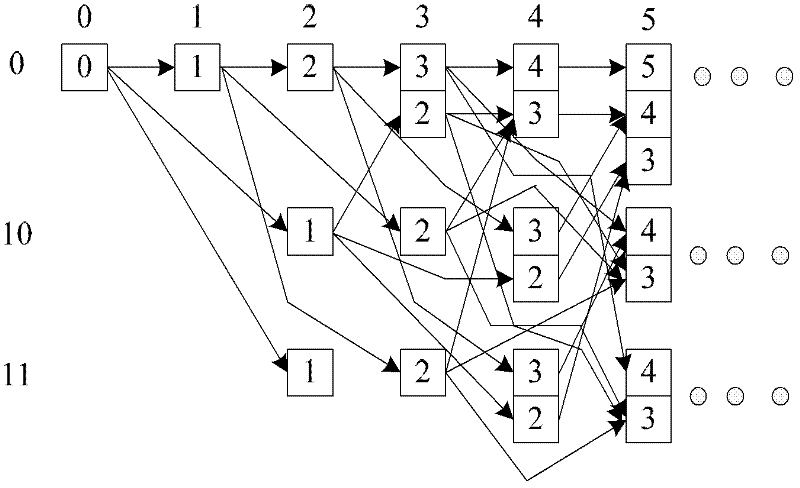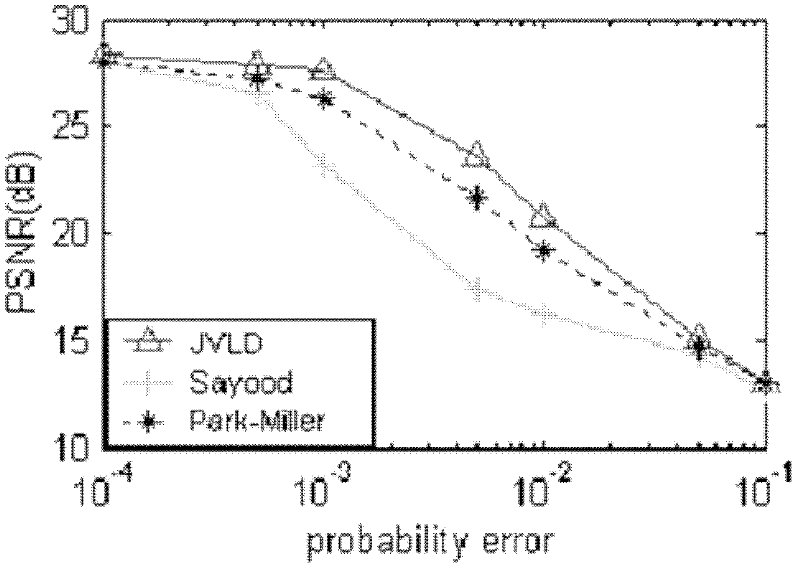Joint source-channel decoding method for video/image transmission
A joint decoding and video image technology, applied in the video field, can solve problems such as errors, only considering digital joint decoding, error diffusion, etc.
- Summary
- Abstract
- Description
- Claims
- Application Information
AI Technical Summary
Problems solved by technology
Method used
Image
Examples
Embodiment Construction
[0020] The present invention will be further described below in conjunction with the accompanying drawings and specific embodiments.
[0021] 1. Realization of joint source-channel arithmetic code decoder.
[0022] (1) Joint source-channel arithmetic code decoding based on maximum a posteriori probability algorithm
[0023] Suppose the source symbol sequence a={a of length N 0 , a 1 ,...a i ,...a N-1} becomes a binary sequence b={b 0 , b 1 ,... b S-1}, then enter the CABAC binary arithmetic code (variable length code) encoder, the output length is the binary sequence x={x 0 , x 1 ,...x M-1}, followed by binary phase shift keying (BPSK) modulation and channel coding into a sequence y={y 0 ,y 1 ,...y M-1}, sent to the AWGN noise channel, the sequence received at the receiver is Soft output information obtained by channel decoding It can be considered as the x-sequence through the noise channel. The maximum a posteriori probability algorithm code decoding is gi...
PUM
 Login to View More
Login to View More Abstract
Description
Claims
Application Information
 Login to View More
Login to View More - R&D
- Intellectual Property
- Life Sciences
- Materials
- Tech Scout
- Unparalleled Data Quality
- Higher Quality Content
- 60% Fewer Hallucinations
Browse by: Latest US Patents, China's latest patents, Technical Efficacy Thesaurus, Application Domain, Technology Topic, Popular Technical Reports.
© 2025 PatSnap. All rights reserved.Legal|Privacy policy|Modern Slavery Act Transparency Statement|Sitemap|About US| Contact US: help@patsnap.com



